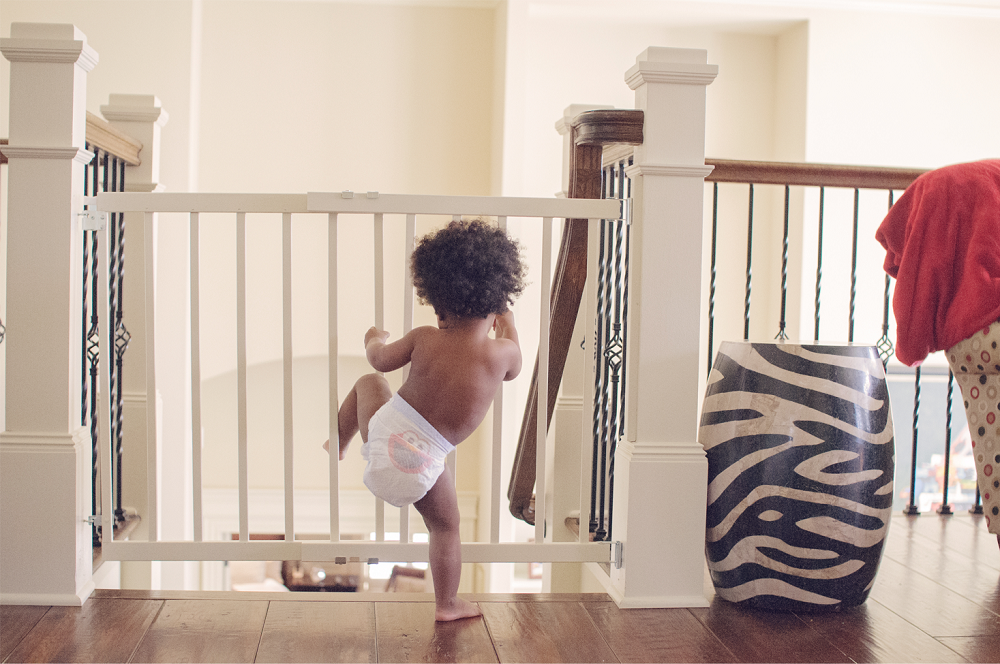All new parents worry about the safety of their children. Every year in Australia it is estimated that 320,000 children under the age of 15 are treated in hospital as a results of accidents, many sustained at home with children under five being most at risk. The best way to keep your baby safe is to child proof your home.
To appreciate the hazards at home, get down low and have a look at what your child sees and what could possibly entice their interest and cause potential harm. What’s within reach? What looks tempting? Where would you go and explore if you could crawl or walk?
Nothing beats supervision, but it isn’t possible to have an eye on your child every minute of the day, so below we have compiled a checklist of indoor safety points to consider:
General:
- Keep an eye out for tiny objects that your baby could choke on
- Place out of reach or lock away any potential poisons including cleaning products and medicines
- Keep knives, breakables and other hazardous items locked up or out of reach
- Put locks/latches on accessible cabinets and drawers that contain unsafe items
- Keep rubbish bin inaccessible
- Never leave a bucket of water or liquid out, toddlers can drown in less than 10cms
- Regularly check that your smoke alarms are working
- Consider purchasing a fire extinguisher and/or fire blanket
- Consider taking an infant CPR / first aid class
- Never leave your baby unsupervised on beds, sofas and bench tops etc
- Keep your purse and any visitor’s out of reach
- Don’t use table cloths as babies can pull what’s on them down
- Only allow your child to play with toys that are for their age group and place all packaging in the bin
Furniture/Furnishings
- Secure furniture that can topple
- Anchor flat screen TVs with safety straps
- Keep heavy items that could cause furniture to topple low
- Secure or remove unstable lamps
- Always close drawers – open drawers make perfect ladders
- Attach corner and edge guards to furniture that will become a hazard
- Put non-slip pads under rugs
- Be mindful of curtain/blind cords ensuring these are kept out of reach of children
- Install window stops to prevent windows opening more than 10cm
- Keep furniture away from windows to prevent climbing
- Use door stops and door hinges to prevent injuries to hands
Stairs
- Install gates at the top and bottom of stairs making sure that they are fitted correctly and always closed
Bathing
- Fill bath tub to just cover baby’s legs
- Check temperature of bath
- Never leave babies or young children in a bath unsupervised
- Put non-slip mats in bathtub
Preventing Burns
- Don’t carry hot food or drink and your baby at the same time
- Keep hot food and drink away from edges of tables
- Don’t hold your baby whilst cooking
- Turn pot handles towards back of stove
Electrical Outlets and Appliances
- Place outlet covers over unused electrical outlets
- Hide electrical cords behind furniture and ensure they don’t dangle over edges on benchtops
- Keep appliances such as hair dryers and toasters etc unplugged and out of reach
- Protect CD players and DVD players with a plastic DVD guard
- Cover or block radiators and portable heaters
- Secure refrigerator with appliance latch
This is by no means an exhaustive list and if you have any concerns about child proofing your home, we recommend you consider hiring a professional child safety proofing consultant.
Creating a safe and stimulating environment at home for your child as it grows from a baby to a toddler can be fun and easy.

